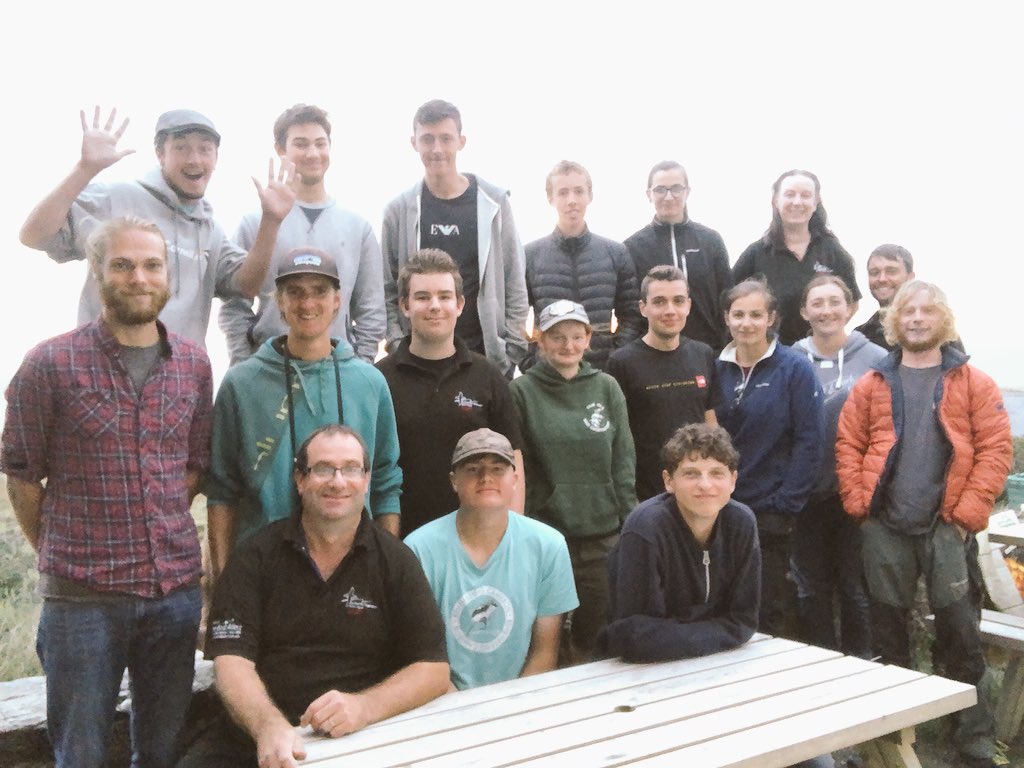In contrast to yesterday's wash out, today dawned bright and sunny and remained that way for the majority of the day. The winds were still gusting from the south-west which whipped another wild swell off the west coast, and once again that's were the majority of the day's spectacular seawatching counts were made. It started early with a
Sooty Shearwater moving south just offshore, conveniently associating with a very obvious flock of Common Scoters to act as a point of reference for various observers across the island. At 09:30am, with Manx Shearwaters streaming past, the radio call went out "
there's a large shearwater heading south!", quickly corrected to "
it's a Great Shearwater!". The bird moved past at pace, but prolonged views were enjoyed by the lucky observers - Warden Steve, Icky Steve and Ephraim - watching from up at the observatory. Billy was collecting a moth trap from within Ty Pellaf reedbed when the news broke, and despite sprinting over to Solfach, had missed it. He returned to the observatory to empty the moth trap with a couple of guests and before he could lift out the first egg box a second Great Shearwater was picked up. Views of this individual were more prolonged as it flew low over the waves several 100 metres offshore, banking often to reveal grey-brown upperparts and a white collar and dark cap that were distinctly visible even at distance. 20 minutes later things got ridiculous when another
(!) individual passed by. These three birds represent the eighth, ninth and tenth records for Bardsey, following on from single confirmed records in 2016 and 2017.
The morning flurry of Great Shearwater induced excitement ensured that the sea was well watched for the rest of the day, and the supporting cast was nothing to turn your nose up to. Another Sooty and two
Balearic Shearwaters moved through with 29868
Manx Shearwaters, as well as a
Storm Petrel, 20
Golden Plovers, two
Bar-tailed Godwits, a
Great Skua, and impressive numbers of 1769
Kittiwakes and 247
Arctic Terns.
Other birds logged today included 41
Fulmars, three
Grey Herons, 16
Common Scoters, a
Kestrel, a
Peregrine, seven
Ringed Plovers, two
Sanderlings, six
Dunlins, three
Turnstones, 12
Mediterranean Gulls, 48
Black-headed Gulls, 1769
Kittiwakes, nine
Sandwich Terns, a
Common Tern, 78
'Commic' Terns, three
Guillemots, four
Razorbills, a
Puffin, 34
Swallows, 42
House Martins, a
Robin, two
Stonechats, ten
Wheatears, two
Sedge Warblers, a
Blackcap, four
Chiffchaffs, 31
Willow Warblers, a
Spotted Flycatcher, three
Chaffinches and 65
Linnets.
Ephraim's field notes for the first Great Shearwater.
The balcony out front of the obs is perfect for prolonged viewing of seabirds moving past the west coast. Fuel these guys with a couple of mugs of coffee and the promise of an interesting Shearwater (and the spare time!), and they'll happily stare out to sea all day.












































